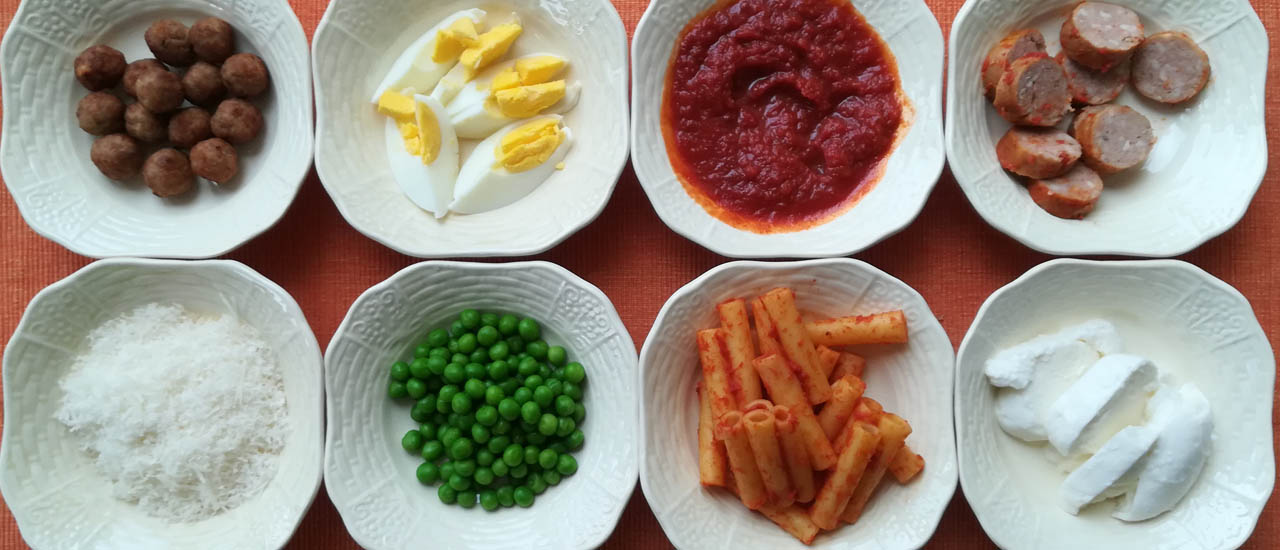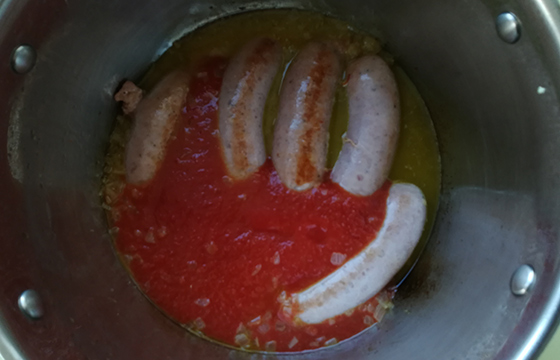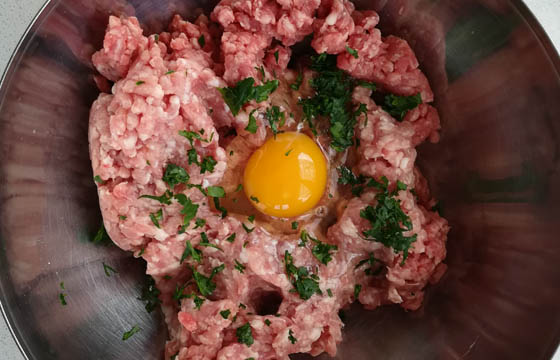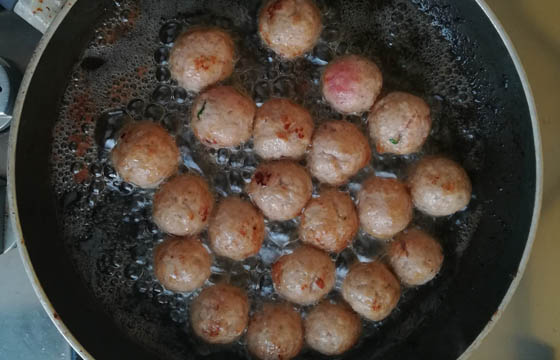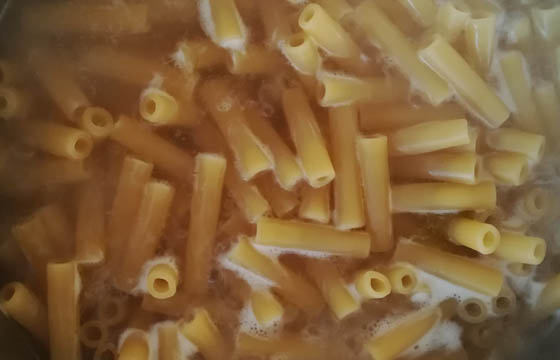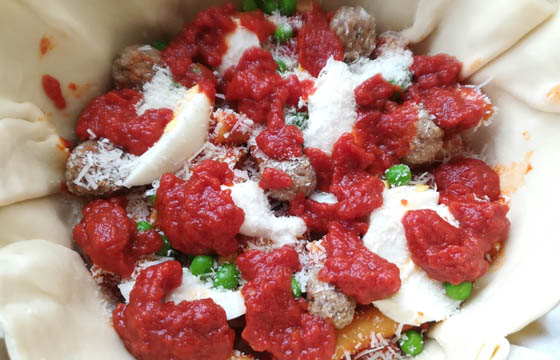Neapolitan zite timbale
Recipe by Eva Scialò
A timbale is a sublime example of southern Italian cuisine, in particular of Sicily and Campania; the origins of the name and the methods of preparation derive from an Arabian instrument, a sort of cylindrical drum equal in height and diameter, an ideal receptacle for preparing a meal fit for a king, abundantly filled with pasta, fine meats, elaborate sauces. Very chic in the noble homes of the Bourbon capital, it became a truncated cone shape in the late 18th century, in order to make it easier to release the preparation from the mould. Unlike pies and lasagne, also having a rich filling, the timbale is served in a shortcrust pastry case. In gastronomic literature you can find traces of timbales in the writings of Vincenzo Corrado and Ippolito Cavalcanti; then as now the timbale is synonymous of a festive day, when rich and sumptuous dishes are passed around the table. A long and painstaking preparation, beautifully portrayed in Stanley Tucci's film "Big Night". There are many variations deriving from the original Arab drum; the Sicilian version being the most famous, with anellini (small rings of pasta), meat sauce and aubergines, and the Neapolitan version, prepared with ziti (pasta tubes), meatballs, meat sauce and fior di latte mozzarella.
 Ingredients for the timbale:
Ingredients for the timbale: 500 g of ziti pasta
500 g of ziti pasta 2 l of tomato puree
2 l of tomato puree 1 tablespoon of tomato concentrate
1 tablespoon of tomato concentrate 300 g of minced beef
300 g of minced beef 300 g of pork sausage
300 g of pork sausage 150 g doc small shelled peas
150 g doc small shelled peas 3 eggs
3 eggs 200 g of fior di latte mozzarella
200 g of fior di latte mozzarella 100 g of grated parmesan
100 g of grated parmesan 1 onion
1 onion 1 slice of stale bread
1 slice of stale bread 20 cl of milk
20 cl of milk 2 springs of parsley
2 springs of parsley 20 cl of white wine
20 cl of white wine salt and pepper
salt and pepper extra virgin olive oil
extra virgin olive oil Ingredients for the shortcrust pastry:
Ingredients for the shortcrust pastry: 400 g of plain flour
400 g of plain flour 200 g of butter
200 g of butter 100 ml of water
100 ml of water 1 teaspoon of salt
1 teaspoon of salt